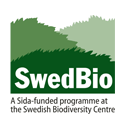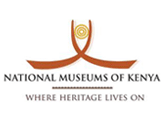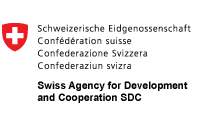Click on images to enlarge
/thumbs/castilla_elastica1_sml.jpg)
habit (Photo: Ken Murray, Cairns City Council)
/thumbs/castilla_elastica1_-_SH_sml.jpg)
close-up of seeds (Photo: Steve Hurst at USDA PLANTS Database)
/thumbs/castilla_elastica6_sml.jpg)
close-up of younger stems and leaf undersides (Photo: Ken Murray, Cairns City Council)
/thumbs/castilla_elastica3_sml.jpg)
bark on main trunk (Photo: Ken Murray, Cairns City Council)
Scientific name
Castilla elastica Sesse ex Cerv.
Synonyms
C. costariana Liebm.; C. guatemalensis Pittier; C. lactiflua O.F. Cook
Common names
Panama rubber tree, Panama rubber, Panama rubbertree, castilla rubber tree, Mexican rubber tree, Mexican rubertree.
Family
Moraceae
Origin
Native to southern Mexico, Central America and the north-western parts of South America.
Naturalised distribution (global)
Locations within which Castilla elastica is naturalised include northern Queensland, Australia and several Pacific islands (including American Samoa, Western Samoa and French Polynesia).
Introduced, naturalised or invasive in East Africa
Castilla elastica is invasive in parts of Tanzania (Tropical Biology Association 2010). The editors are not aware of records of the introduction of this species to Kenya and Uganda, though this does not necessarily mean that it is absent from these countries.
Habitat
Grows in well-developed but disturbed gallery forest, rain forest regrowth and on old farmland.
Description
Castilla elastica grows into a large tree. Bark exudate is rapid and copious. Twigs, petioles and leaves produce a milky exudate. Leaf blades rather large, about 45 x 17 cm, petioles about 1-1.5 cm long. Stipules rather large, about 8 cm long, longitudinally veined and hairy on the outer surface. Upper surface of the leaf blades scabrous, lower surface hairy. Leaf blade margin appears to be toothed but closer inspection reveals that the 'teeth' are really tufts of hair. Lateral veins curving inside the blade margin but not forming definite loops.
Flowers borne in flattened head-like clusters formed from numerous overlapping bracts. Male flowers: Flower clusters stalked, each cluster about 2-3 cm across. Stalks about 2.5-3 cm long. Female flowers: Flowers clusters almost sessile, about 2 cm across. Fruit is a flat disk of numerous green bracts with about 20-30 individual, orange-red, fleshy, 1-seeded fruits. Seeds about 8-10 x 6-8 mm.
Reproduction and dispersal
Castilla elastica reproduces mainly by seed, which are spread by birds, monkeys and other mammals.
Economic and other uses
This tree was the principal source of latex for Mesoamerican peoples in pre-Columbian times and is still used for this purpose today.
Environmental and other impacts
Castilla elastica can become established in undisturbed rainforest at low elevations, thus posing a threat to intact native forests. C. elastica is regarded as an environmental weed in some parts of the world, notably in the Pacific, and for this reason has been included in the Global Invasive Species Database (GISD 2008).
Management
The precise management measures adopted for any plant invasion will depend upon factors such as the terrain, the cost and availability of labour, the severity of the infestation and the presence of other invasive species. Some components of an integrated management approach are introduced below.
The best form of invasive species management is prevention. If prevention is no longer possible, it is best to treat the weed infestations when they are small to prevent them from establishing (early detection and rapid response). Controlling the weed before it seeds will reduce future problems. Control is generally best applied to the least infested areas before dense infestations are tackled. Consistent follow-up work is required for sustainable management.
Seedlings and young trees can be sprayed with suitable herbicides. When using any herbicide always read the label first and follow all instructions and safety requirements. If in doubt consult an expert.
The editors are not aware of the existence of biological control agents for this species.
Legislation
Not listed as a noxious weed by the state or governments in Kenya, Tanzania and Uganda.
References
GISD (2008). Global Invasive Species Database online data sheet. Castilla elastica (tree). www.issg.org/database. Accessed March 2011.
Tropical Biology Association (2010). Usambara Invasive Plants - Amani Nature Reserve - www.tropical-biology.org/research/dip/species.htm.
Editors
Agnes Lusweti, National Museums of Kenya; Emily Wabuyele, National Museums of Kenya, Paul Ssegawa, Makerere University; John Mauremootoo, BioNET-INTERNATIONAL Secretariat - UK.
Acknowledgments
This fact sheet is adapted from The Environmental Weeds of Australia by Sheldon Navie and Steve Adkins, Centre for Biological Information Technology, University of Queensland. We recognise the support from the National Museums of Kenya, Tropical Pesticides Research Institute (TPRI) - Tanzania and Makerere University, Uganda. This activity was undertaken as part of the BioNET-EAFRINET UVIMA Project (Taxonomy for Development in East Africa).
Contact
BioNET-EAFRINET Regional Coordinator: [email protected]












